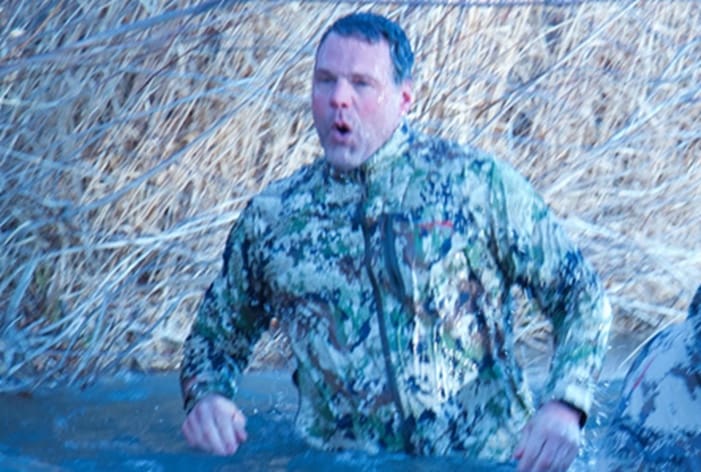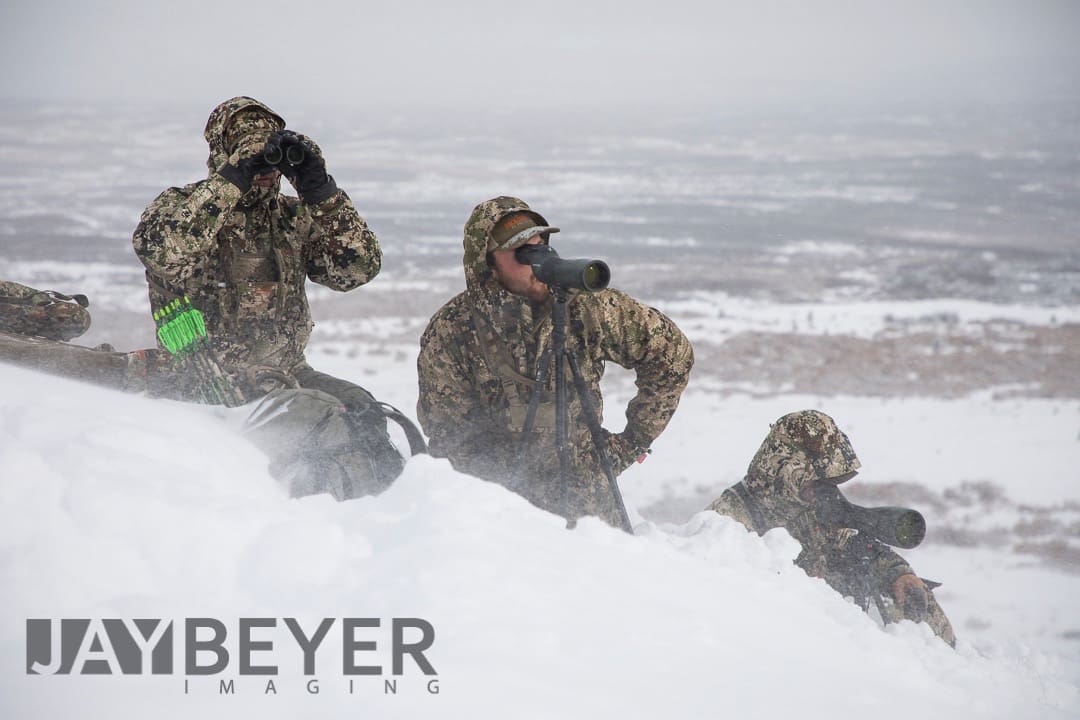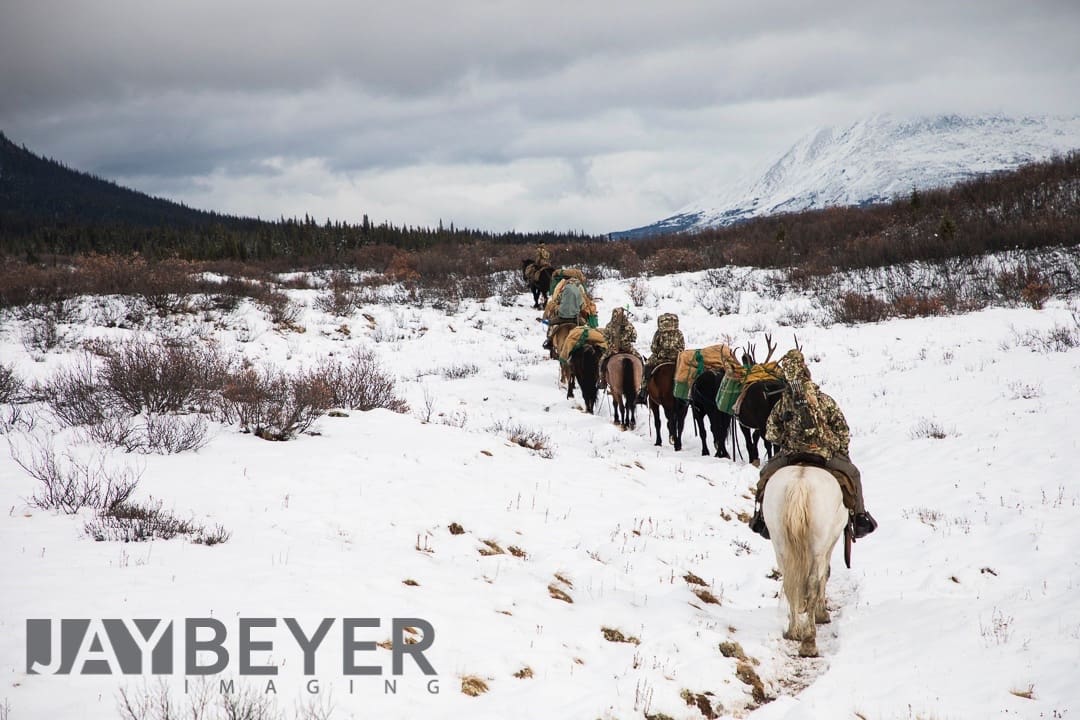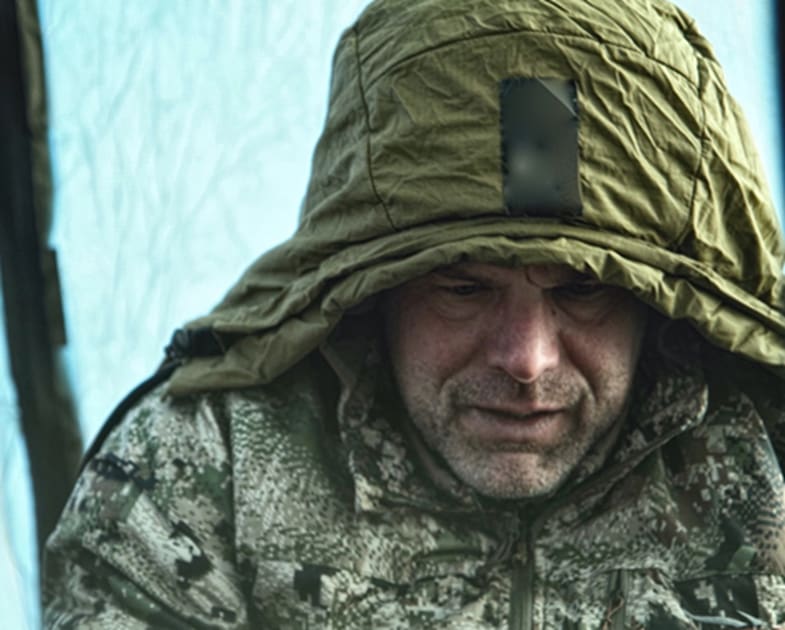SSD recently conducted a Q&A session with Sitka’s Big Game Product Manager John Barklow. He is well known to many of you, but for those unfamiliar with John, he is a US Navy Veteran who capped off a distinguished career at Naval Special Warfare Center – Detachment Kodiak in Alaska, teaching NSW personnel how to survive in the cold. Although he was a diver by trade and not a SEAL, his expertise was valued from his years in the mountains that they recruited him to be an instructor at the Kodiak Schoolhouse.
SSD: What is your role at Sitka?
JB: I am the Big Game Product Manager. I help develop clothing and equipment for hunting animals like elk, mule deer, sheep, and mountain goats. Most of that hunting occurs in remote mountains which leverages my decades of experience.

Photo: Jay Beyer Imaging
SSD: You were in the Navy, tell us a little about your service.
JB: I served 26 years in the Navy. Twenty of those were in direct support of Naval Special Warfare. I spent a lot of time climbing and skiing on my days off and was considering getting out. I thought I wanted to become a mountain guide and was working to get my American Mountain Guide Qualification.
I was assigned to SEAL Team Five at the time and for years I’d been teaching point men from different teams how to move through technical terrain at night and climb tactically, what we called cliff assault. My unique skill set was in dire need after 9/11 and I was recruited for the job at Det. Kodiak. Most of NSW’s experts in Mountain and Arctic Warfare had retired so I was one of a select few brought in to help. The truth is we were ill-prepared for the terrain and environment of Afghanistan. We took a year to study the problem and understand the unique challenges. Within two years we had developed the Protective Combat Uniform (PCU) and Personal Environmental Protective Survival Equipment (PEPSE) system with the help of professional climbers and industry partners.
We also worked on new Tactics, Techniques and Procedures and developed a curriculum for the training we were conducting. This training eventually became part of the SEAL training pipeline.

Photo: US DOD
SSD: Tell us about those who influenced you while you worked on PCU and PEPSE.
JB: I learned a lot from Mark Twight while I was working on the PCU. Mark is a world-renowned alpine climber and I learned about the attitude and mindset required to work in that harsh environment.
I also had the chance to work with Rick Elder of Natick’s Special Operations Forces Survival, Support & Equipment Systems team while PCU was being developed. Rick taught me about working the system to get what we needed in such a short period of time.
One of the biggest influences was working with my peers, including those from other SOF units. And by working, I mean in the mountains: climbing, skiing, and becoming comfortable in the environment, discussing tactics. We were all trying to figure it out and the collaboration lessened the learning curve.
SSD: How do you apply that experience at Sitka?
JB: I’ve trained thousands of guys and seen how gear is used both correctly and incorrectly. I’ve worked with designers to help instill my no compromise mindset. I trust our field testers, but nothing is ready until I’ve tried it out myself. This mindset goes back to the Rewarming Drill we had our students conduct at Det-Kodiak.
SSD: I’ve heard about this. The Rewarming Drill is legendary. There’s this photo of an instructor towering over some very cold, very wet SEALs. Could you tell us a little more for those unfamiliar?

Photo: MCS2 Manzano – DOD
JB: The instructors at Det-Kodiak developed this evolution where students are completely immersed in cold water, wearing their kit, surrounded by ice. The idea is to keep them in long enough to drive a sense of urgency to perform the task. They have a set amount of time to get out of the water and work through their protocols with a buddy to rewarm and dry out.
The drill creates trust not only in the gear to save their life but also in themselves to control a bad situation. You can’t just leave the mountains during an op because you’re cold or tired. The gear and this drill helped them to understand they can leave the mountains on their terms.
I made a video with Eastman’s Hunting Journals demonstrating it several years ago titled Re-Warming Drill – How to Survive Hypothermia without a Fire (Eastman’s Hunting Journal – 04 April 2017).
With technical gear, you can’t just hand it to someone without training. That’s like giving the keys to your Porsche to a 16-year-old.

Photo: Eastman’s Hunting Journal
SSD: Put us in the thought process. Give us a scenario where this applies to the hunter.
JB: 13,000 feet… a mule deer hunt in August. A storm rolls in unexpectedly from over the top of the ridge. The temperature plummets, the wind picks up and it starts to snow. If you don’t have the right gear, and most importantly know how to use it, you’re a casualty.
SSD: You’ve been the manager of Big Game for six years. Do you see any parallels between the military and hunting?
JB: Absolutely! A Special Reconnaissance mission and a wilderness hunt have direct parallels. You plan and you execute. The biggest difference is in what you’re observing. However, a hunter can leave anytime he wants. The guy in the military is in, until the mission is complete.

Photo: Jay Beyer Imaging
SSD: Have you ever been in a life or death situation while hunting?
JB: We were hunting in Northern British Columbia in mid-October a few years ago. They dropped us off at a lake by floatplane.
There, we linked up with horses to head deeper into the backcountry to hunt mountain caribou. We rode into full winter conditions the deeper we went. The wrangler dropped us off on a glassing ridge with some bivy gear and left us for a few days.
The ride out to the trailhead took four days I believe. The snow turned into rain and then refroze on the narrow horse trails. One of the guys was thrown from his horse and dislocated his shoulder. Another guide was thrown off and had a concussion. My horse, a 1400 pound beast, fell out from underneath me in the dark as we rode through a boulder field. I was banged up pretty good but was able to get out from underneath before the horse freaked out and crushed my leg. The horse almost didn’t make it and we thought we’d have to shoot him where he lay.

Photo: Jay Beyer Imaging
SSD: Between your military experience in Alaska, your time climbing and hunting, is there anything you’ve applied directly to clothing development?
JB: Clothing is all about managing moisture. It’s your armor from the elements. Twight taught me that. These technical clothing systems aren’t meant to keep you dry as much as to dry out as quickly as possible. It’s all about managing moisture and using your body as the heat source to dry out.
When I’m testing out a new clothing layer or textile, there’s a test I put it through that I don’t ask of any other field testers. I put the new layer in a bucket of water to get it soaked. Then I put the layer on within a tried and true clothing system. I want to see how the layer works within the system to manage moisture. I’ll go for a hike, ski tour or do a workout in my gym. The worse the weather the better to simulate worst case scenarios. I call this exercising your clothing system. It’s critical to find out how a layer works within a system to provide the performance I’m looking for.

Photo: Eastman’s Hunting Journal
SSD: Our readers are quite interested in the new SOF product line. Although you’re the Big Game Product Manager, how have you been involved in the new line?
JB: When he arrived in the Fall of 2020, I walked Lav (John Laviolette, SOF Program Manager) through the entire Sitka line. I also went over what SOF guys have been asking for and what they’ve been using from the HUNT product line already. That helped influence the DNA of the soon-to-be launched SOF product line.
A lot of these guys have been operating in the same clothing they hunt in. They know they can rely on it. They like the durability and the fit. It goes back to confidence.
We cherry picked Sitka technologies and laid the foundation for the program, however, we don’t build single pieces. We use a systems-based approach to design. When you do this, you get the performance you seek.
SSD: Earlier you mentioned wanting to get your American Mountain Guide Qualification. Are there any personal projects you’ve got going on?
JB: I recently started an Instagram page @jbarklow to continue teaching. I’m working now on building a website and training content. I missed teaching and wanted to continue to help others lessen the steepness of the learning curve. The dirty little secret is just because you work for a company developing product doesn’t mean you’re an end user or know how to use any of the gear. There is a real need for education within the hunting and mountain sports community.
SSD: I spoke with Sitka founder Jonathon Hart about being overwhelmed by the sheer number of styles you guys offer. He said that Sitka is taking a look at that.
JB: I’ve reset the Big Game line over the last six years, cutting the styles in half. An eight-piece system will work about 85%-90% of the time. Of course, there’s personal preferences, price points, and environmental considerations to factor in.

Photo: Steven Drake
SSD: If you could summarize your philosophy, what would it be?
JB: People’s lives can be on the line when they use our gear, especially now as we enter the military business. My philosophy is easy: No compromise, period, end of story!
—
This interview was conducted by SSD Editor, Eric Graves.


Watching that was the most useful and important 17 minutes of my day. Thanks.
i completely agree. i now have to re-think my layering strategy somewhat.
I’m glad this is getting out…..but why no two-way zips on outerwear?
That question goes out to a few .mil manufacturers, not just Sitka.
Good interview.
Good stuff, always good to hear more about the insights from up North. John has a wealth of experience in many different environments and has been gracious to share some of those with us, much appreciated!